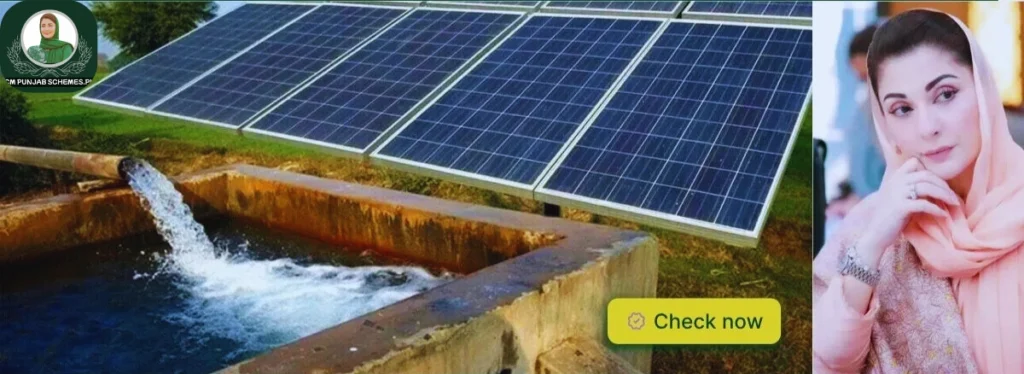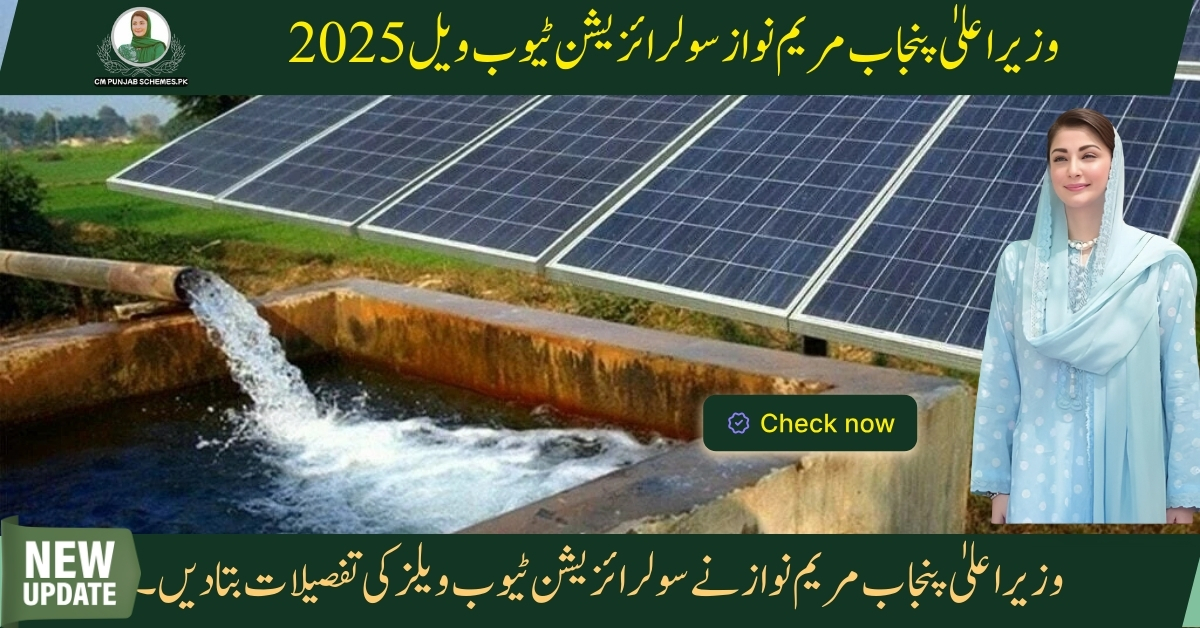CM Punjab Solarization of Tube Wells Phase 2 – Powering Farmers with a Brighter Future
To improve agriculture CM Punjab is launching a new program called ‘CM Punjab Solarization of Tube Wells’. Regarding this, the community energy plan aims at providing cheaper energy to the farmers and reducing the emission of greenhouse gases so as to empower farmers with communal energy and sustainable farming. It covers the solarization of 8000 tube wells and also offers a PKR 1 billion subsidy for farmers in converting to the use of solar energy. The use of solar-powered tube-wells will minimise the use of electricity and diesel for irrigation purposes.
Empowering Farmers Through Solarization
CM Punjab Solarization of tube wells gives a modern technology in hand to the farmers. Education prepares them to meet the environmental change conditions and to do business in the global world.The fact that farming operations are no longer dependent on conventional sources of energy makes their production more reliable and effective.

Key Features of the CM Punjab Solarization of Tube wells
The CM Punjab Solar Program for Tubewells provides comprehensive support to farmers. Below are its main components:
Subsidies for Solar Systems:
- The Punjab government covers 67–75% of the installation cost, with farmers paying the remaining 25–33% over five years.
- Subsidies are based on the solar system’s capacity:
- 10 kW: PKR 500,000 subsidy.
- 15 kW: PKR 750,000 subsidy.
- 20 kW: PKR 1,000,000 subsidy.
- The total cost of solar systems varies, but farmers’ contributions are significantly reduced due to these subsidies.
CM Punjab Solarization of Tube wells:
- The program converts both electric and diesel-powered tubewells to solar energy, supporting systems with a power requirement of up to 15–20 kW.
- Solar systems include panels, inverters, batteries, and other necessary components for efficient operation.
Cost Savings:
- Solar-powered tubewells reduce irrigation costs to approximately PKR 50 per acre, compared to PKR 1,500 for electric tubewells and PKR 3,000 for diesel ones. Farmers can save over PKR 10,000 daily and PKR 350,000 monthly.
Environmental Benefits:
- By reducing reliance on diesel and electricity, the program lowers carbon emissions, contributing to a cleaner environment.
- It supports Punjab’s transition to renewable energy, aligning with global climate change goals.
Read More About PM Free Laptop Initiative 2025 : Comprehensive Guide on Application deadline
Eligibility Criteria for CM Punjab Solarization of tubewells
Eligibility for CM Punjab Solarization of tube wells program started from May 15, 2025 requires that applicants own land registered in their name. Interested farmers are urged to register before the deadline. The Solarization initiative will support three categories of solar power kits based on horsepower capacity:
- PKR 500,000 subsidy for 10-horsepower kits,
- PKR 750,000 subsidy for 15-horsepower kits,
- PKR 1,000,000 subsidy for 20-horsepower kits.
Farmers will be responsible for paying the remaining balance for the solar system installation.
Farmers’ Eligibility Criteria for CM Punjab Solarization of Tube Wells
Note that only those farmers who fulfill all eligibility criteria given below will be eligible for the solarization of tubewells.
- The applicant must be a resident of Punjab province.
- The applicant must be above 18 years of age and must have a Computerized ID Card.
- Only one person (farmer) from each family can apply for a solar system.
- The applicant must own an agricultural holding within the revenue limits of the same district where he has submitted his application.
- The applicant must have proof of individual ownership.
- In the case of an electric tube well, the farmer applicant must be the owner of the electric tube well; to prove this, the last paid bill of the electric tubewell connection has to be submitted as proof.
- Farmers in default of any bank or financial institution will not be eligible for this scheme.
- If a farmer owns an electrical tube well, he must have a three-phase electrical connection.
- The electricity connection for the electrical tube well must have been installed on or before October 30, 2024.
Required Documents for Registration
Farmers who meet all the eligibility criteria and are willing to convert their tube wells to solar do not need any documents to complete the registration in CM Punjab Solarization of tube wells program. But if applying online the farmers will need his identity card number and mobile phone number registered in his name.
CM Punjab Solarization of Tube Wells Phase 2 Launching Details
Web sources indicate that Phase 2, involving the solarization of 10,000 additional tubewells with federal collaboration, is expected to begin in July 2025, following the completion of Phase 1 installations. This timeline aligns with the program’s two-year plan (2024–2026) and a budget allocation of PKR 9,887.42 million, including PKR 2,500 million for 2024–25.
Farmers are advised to monitor the official portal (https://cmstp.punjab.gov.pk/) and the Punjab Agriculture Department’s website (https://agripunjab.gov.pk/) for announcements regarding Phase 2’s registration start date.
Click to Read More about PM Laptop Program Extended Deadline details
How to Apply for CM Punjab Solarization of Tube Wells
Farmers looking to take part in the program can download application forms from the Punjab agriculture department’s official website or apply directly. For additional assistance,
The agriculture helpline is available at 0800-17000, from 8:00 AM to 8:00 PM, Monday through Saturday
For information regarding CM Punjab Solarization of Tube well Program visit https://agripunjab.gov.pk/solarization or cmstp.punjab.gov.pk
Conclusion
CM Punjab Solarization of Tube Wells is the revolution for Punjab agriculture in general. It is cost effective, a sustainable means and efficient way of fulfilling the irrigation requirements. Punjab is thus targeting the way to a bright and clean future for farmers of Punjab through the road of solar power. Such a progressive program facilitates not only the economic development of the country but also preservation of the environment for future generations.







